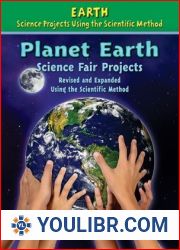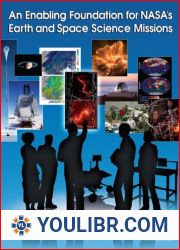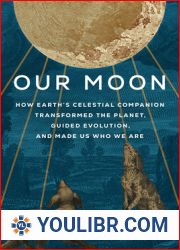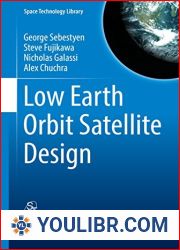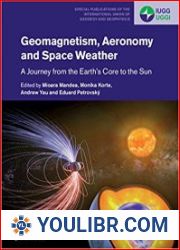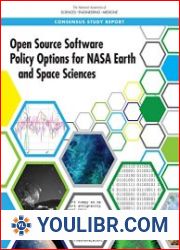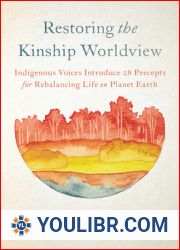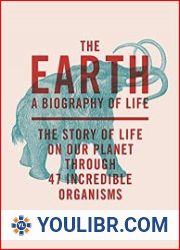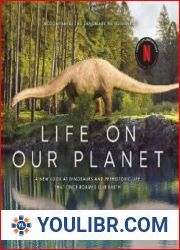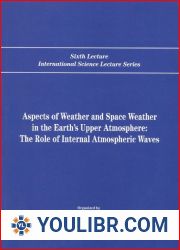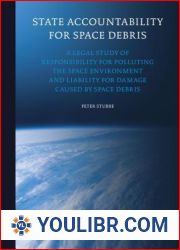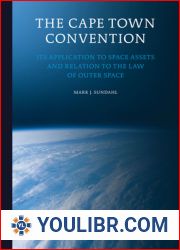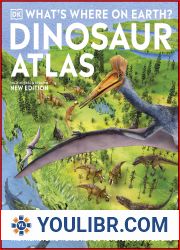
BOOKS - Planet Earth: The View from Space

Planet Earth: The View from Space
Author: D. James Baker
Year: January 1, 1990
Format: PDF
File size: PDF 11 MB
Language: English

Year: January 1, 1990
Format: PDF
File size: PDF 11 MB
Language: English

Planet Earth: The View from Space As we stand at the dawn of the 21st century, the fragility of our planet's environment has become all too apparent. From intense heat and drought in the summer of 1988 to greenhouse warming, acid rain, and the destruction of our rainforests, Hurricane Hugo, and the Endangered Earth, we are more aware than ever before of the need for a deeper understanding of how our planet works and how we can protect it. Despite three decades of technological advancements, our knowledge of the Earth's systems and their interactions remains incomplete at best. To determine environmental policies for the future, we need more information and better global climate models. In his book, "Planet Earth: The View from Space D. James Baker provides a concise and up-to-date overview of the ongoing international research efforts aimed at improving our ability to predict global climate change. He begins by reviewing extant space-based satellites and their instruments, describing the areas in which operational and research missions are gathering increasing amounts of data on Earth-sun interaction, land vegetation patterns, ocean color, temperature, the atmosphere, the ice sheets of the polar regions, and the Earth's gravity field. These advances fill in gaps in our knowledge even as they raise new questions about critical global processes.
Планета Земля: Вид из космоса На заре XXI века хрупкость окружающей среды нашей планеты стала слишком очевидной. От сильной жары и засухи летом 1988 года до парникового потепления, кислотных дождей и уничтожения наших тропических лесов, урагана Хьюго и вымирающей Земли, мы как никогда прежде осознаем необходимость более глубокого понимания того, как работает наша планета и как мы можем ее защитить. Несмотря на три десятилетия технологического прогресса, наши знания о системах Земли и их взаимодействии остаются в лучшем случае неполными. Чтобы определить экологическую политику на будущее, нам нужно больше информации и лучшие глобальные климатические модели. В своей книге «Планета Земля: взгляд из космоса» Д. Джеймс Бейкер дает краткий и актуальный обзор текущих международных исследовательских усилий, направленных на улучшение нашей способности прогнозировать глобальное изменение климата. Он начинает с обзора существующих космических спутников и их инструментов, описывая области, в которых оперативные и исследовательские миссии собирают все большее количество данных о взаимодействии Земли и Солнца, моделях растительности суши, цвете океана, температуре, атмосфере, ледяных покровах полярных регионов и гравитационном поле Земли. Эти достижения заполняют пробелы в наших знаниях, даже когда они поднимают новые вопросы о критических глобальных процессах.
Planète Terre : Vue de l'espace À l'aube du XXIe siècle, la fragilité de l'environnement de notre planète est devenue trop évidente. De la chaleur intense et de la sécheresse de l'été 1988 au réchauffement des serre, aux pluies acides et à la destruction de nos forêts tropicales, de l'ouragan Hugo et de la Terre en voie d'extinction, nous sommes plus que jamais conscients de la nécessité de mieux comprendre comment fonctionne notre planète et comment nous pouvons la protéger. Malgré trois décennies de progrès technologiques, notre connaissance des systèmes terrestres et de leurs interactions reste, au mieux, incomplète. Pour définir les politiques environnementales de l'avenir, nous avons besoin de plus d'informations et de meilleurs modèles climatiques mondiaux. Dans son livre The Earth : A view from space, James Baker donne un aperçu concis et pertinent des efforts de recherche internationaux en cours visant à améliorer notre capacité à prédire le changement climatique mondial. Il commence par passer en revue les satellites spatiaux existants et leurs instruments, décrivant les domaines dans lesquels les missions opérationnelles et de recherche recueillent de plus en plus de données sur l'interaction entre la Terre et le Soleil, les modèles de végétation terrestre, la couleur de l'océan, la température, l'atmosphère, la couverture glaciaire des régions polaires et le champ gravitationnel de la Terre. Ces réalisations comblent des lacunes dans nos connaissances, même lorsqu'elles soulèvent de nouvelles questions sur les processus mondiaux critiques.
Planeta Tierra: Vista desde el espacio En los albores del siglo XXI, la fragilidad del medio ambiente de nuestro planeta se hizo demasiado evidente. Desde el intenso calor y la sequía en el verano de 1988 hasta el calentamiento de los invernaderos, las lluvias ácidas y la destrucción de nuestras selvas tropicales, el huracán Hugo y la Tierra en extinción, estamos más conscientes que nunca de la necesidad de comprender mejor cómo funciona nuestro planeta y cómo podemos protegerlo. A pesar de tres décadas de avances tecnológicos, nuestros conocimientos sobre los sistemas de la Tierra y sus interacciones siguen siendo incompletos en el mejor de los casos. Para definir las políticas ambientales para el futuro, necesitamos más información y mejores modelos climáticos globales. En su libro «Planeta Tierra: Una mirada desde el espacio», el Dr. James Baker ofrece una breve y actualizada visión general de los actuales esfuerzos internacionales de investigación para mejorar nuestra capacidad de predecir el cambio climático global. Comienza con una revisión de los satélites espaciales existentes y sus instrumentos, describiendo las áreas en las que las misiones operacionales y de investigación recopilan cada vez más datos sobre la interacción entre la Tierra y el Sol, los modelos de vegetación terrestre, el color del océano, la temperatura, la atmósfera, las capas de hielo de las regiones polares y el campo gravitatorio de la Tierra. Estos logros llenan las lagunas en nuestro conocimiento, incluso cuando plantean nuevas preguntas sobre procesos globales críticos.
Pianeta Terra: Vista dallo spazio All'alba del XXI secolo, la fragilità ambientale del nostro pianeta è diventata troppo evidente. Dal forte caldo e siccità dell'estate 1988 al riscaldamento serra, alle piogge acide e alla distruzione delle nostre foreste tropicali, all'uragano Hugo e alla Terra in via di estinzione, siamo più consapevoli della necessità di capire meglio come funziona il nostro pianeta e come possiamo proteggerlo. Nonostante i tre decenni di progresso tecnologico, la nostra conoscenza dei sistemi terrestri e delle loro interazioni rimane al massimo incompleta. Per definire le politiche ambientali future, abbiamo bisogno di più informazioni e di migliori modelli climatici globali. Nel suo libro «Pianeta Terra: uno sguardo dallo spazio», D. James Baker fornisce una breve e aggiornata panoramica degli sforzi internazionali di ricerca in corso per migliorare la nostra capacità di prevedere il cambiamento climatico globale. Inizia con una panoramica dei satelliti spaziali esistenti e dei loro strumenti, descrivendo le aree in cui le missioni operative e di ricerca raccolgono sempre più dati sull'interazione tra la Terra e il Sole, i modelli di vegetazione della Terra, il colore degli oceani, la temperatura, l'atmosfera, le coperture di ghiaccio delle regioni polari e il campo gravitazionale della Terra. Questi progressi colmano le lacune della nostra conoscenza, anche quando sollevano nuove domande sui processi globali critici.
Planet Erde: Blick aus dem All Zu Beginn des 21. Jahrhunderts wurde die Fragilität der Umwelt unseres Planeten allzu offensichtlich. Von der extremen Hitze und Dürre im Sommer 1988 über die Treibhauserwärmung, den sauren Regen und die Zerstörung unserer Regenwälder, den Hurrikan Hugo und die vom Aussterben bedrohte Erde sind wir uns mehr denn je der Notwendigkeit bewusst, ein tieferes Verständnis dafür zu entwickeln, wie unser Planet funktioniert und wie wir ihn schützen können. Trotz drei Jahrzehnten technologischen Fortschritts bleibt unser Wissen über die Erdsysteme und ihre Wechselwirkungen bestenfalls unvollständig. Um die Umweltpolitik für die Zukunft zu definieren, brauchen wir mehr Informationen und bessere globale Klimamodelle. In seinem Buch Planet Earth: Ein Blick aus dem Weltraum gibt D. James Baker einen kurzen und aktuellen Überblick über die aktuellen internationalen Forschungsanstrengungen zur Verbesserung unserer Fähigkeit, den globalen Klimawandel vorherzusagen. Er beginnt mit einem Überblick über die bestehenden Weltraumsatelliten und ihre Instrumente und beschreibt Bereiche, in denen operative und Forschungsmissionen eine zunehmende Menge an Daten über das Zusammenspiel von Erde und Sonne, Landvegetationsmodelle, Ozeanfarbe, Temperatur, Atmosphäre, Eisbedeckungen der Polarregionen und das Gravitationsfeld der Erde sammeln. Diese Fortschritte füllen unsere Wissenslücken, auch wenn sie neue Fragen zu kritischen globalen Prozessen aufwerfen.
''
Dünya: Uzaydan Bir Bakış 21. yüzyılın şafağında, gezegenimizin çevresinin kırılganlığı çok belirginleşti. 1988 yazındaki aşırı sıcak ve kuraklıktan sera ısınmasına, asit yağmurlarına ve yağmur ormanlarımızın, Hugo Kasırgası'nın ve ölmekte olan bir Dünya'nın yıkımına kadar, gezegenimizin nasıl çalıştığına ve nasıl korunabileceğimize dair daha derin bir anlayışa olan ihtiyacın her zamankinden daha fazla farkındayız. Otuz yıllık teknolojik ilerlemeye rağmen, Dünya'nın sistemleri ve etkileşimleri hakkındaki bilgimiz en iyi ihtimalle eksik kalıyor. Gelecek için çevre politikaları belirlemek için daha fazla bilgiye ve daha iyi küresel iklim modellerine ihtiyacımız var. "Planet Earth: A View from Space'adlı kitabında D. James Baker, küresel iklim değişikliğini tahmin etme yeteneğimizi geliştirmek için devam eden uluslararası araştırma çabalarına kısa ve alakalı bir genel bakış sunuyor. Mevcut uzay uydularını ve araçlarını inceleyerek, operasyonel ve araştırma görevlerinin Dünya-Güneş etkileşimleri, kara bitki örtüsü desenleri, okyanus rengi, sıcaklık, atmosfer, kutup bölgesi buz tabakaları ve Dünya'nın yerçekimi alanı hakkında artan miktarda veri topladığı alanları tanımlayarak başlıyor. Bu ilerlemeler, kritik küresel süreçler hakkında yeni sorular sorarken bile bilgimizdeki boşlukları dolduruyor.
الأرض: منظر من الفضاء في فجر القرن الحادي والعشرين، أصبحت هشاشة بيئة كوكبنا واضحة للغاية. من الحرارة الشديدة والجفاف في صيف عام 1988 إلى الاحتباس الحراري والأمطار الحمضية وتدمير غاباتنا المطيرة وإعصار هوغو والأرض المحتضرة، نحن ندرك أكثر من أي وقت مضى الحاجة إلى فهم أعمق لكيفية عمل كوكبنا وكيف يمكننا حمايته. على الرغم من ثلاثة عقود من التقدم التكنولوجي، فإن معرفتنا بأنظمة الأرض وتفاعلاتها لا تزال غير مكتملة في أحسن الأحوال. لوضع سياسات بيئية للمستقبل، نحتاج إلى مزيد من المعلومات ونماذج مناخية عالمية أفضل. في كتابه «كوكب الأرض: منظر من الفضاء»، يقدم د. جيمس بيكر نظرة عامة موجزة وذات صلة بجهود البحث الدولية الجارية لتحسين قدرتنا على التنبؤ بتغير المناخ العالمي. يبدأ بمراجعة الأقمار الصناعية الفضائية الحالية وأدواتها، ووصف المجالات التي تجمع فيها البعثات التشغيلية والبحثية كميات متزايدة من البيانات حول تفاعلات الأرض والشمس، وأنماط الغطاء النباتي الأرضي، ولون المحيطات، ودرجة الحرارة، والغلاف الجوي، والصفائح الجليدية للمنطقة القطبية، ومجال جاذبية الأرض. وتسد هذه التطورات الثغرات في معرفتنا، حتى وهي تثير أسئلة جديدة بشأن العمليات العالمية الحاسمة.








 49
49  2 TON
2 TON








